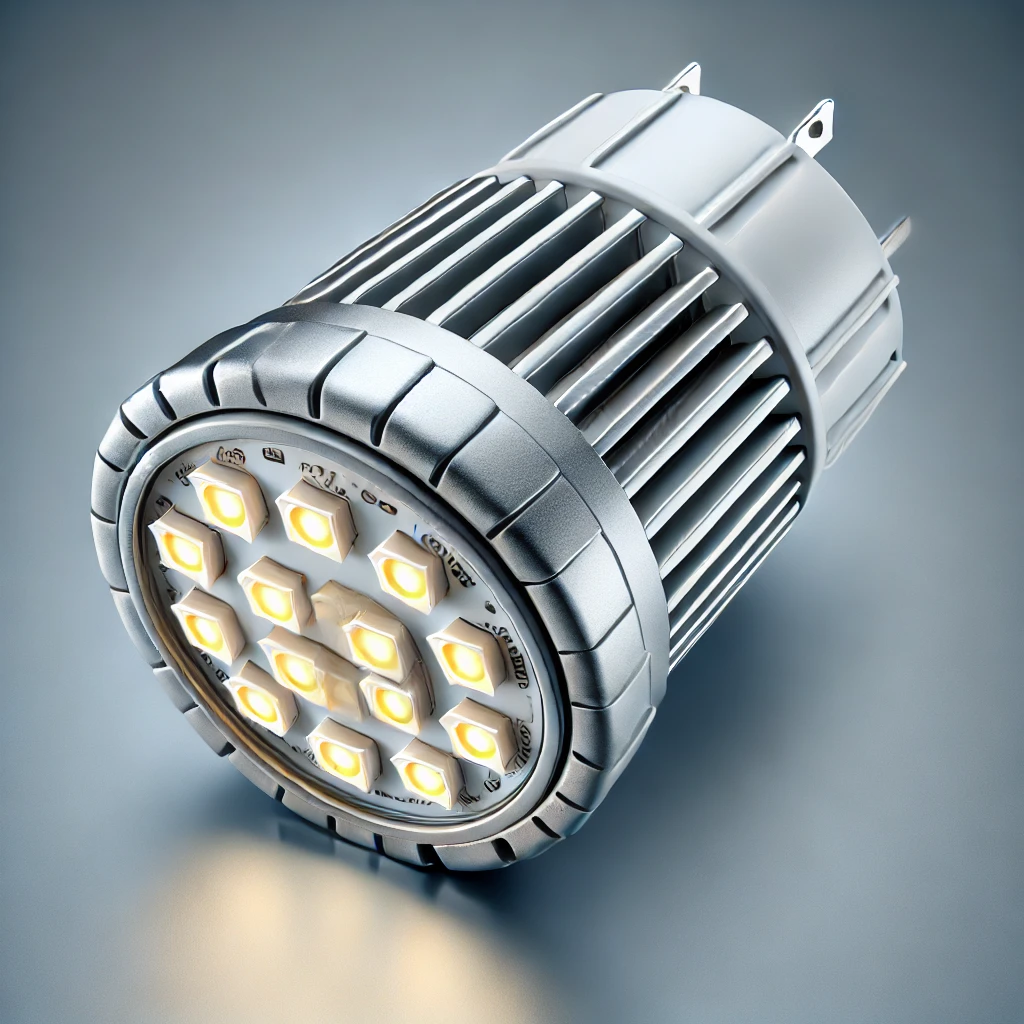How long do LED lights really last? Many people buy LED lights to save energy and reduce replacement frequency, but sometimes they seem to burn out sooner than expected. Solution: Understanding the actual lifespan of LED lights and the factors that influence it can help you make more informed decisions.
LED lights typically last between 25,000 to 50,000 hours, depending on their quality, usage environment, and power supply stability.If used for 5 hours a day, the lifespan of LED lights should be around 20 years.
Today, we will delve into the lifespan of LED lights, revealing their actual longevity, replacement frequency, and the key factors that affect their lifespan.
1. How long do LED lights really last?

The nominal lifespan of LED lights typically ranges from 25,000 to 50,000 hours, and some high-quality LED lights can last up to 100,000 hours. This means that a 50,000-hour LED light, used 8 hours a day, can last nearly 17 years. However, actual lifespan is influenced by various factors.
Quality is Key: High-quality LED lights generally last longer, while low-quality components can significantly shorten the lifespan. Choosing well-known brands and high-quality products is the first step to ensuring longevity.
Heat Management: LED lights generate heat, and if not properly dissipated, this heat can shorten the lifespan of the lights. Good heat sinks and ventilation design help extend the life of LEDs. Ensure the lights are used in suitable environments, avoiding high temperatures and enclosed spaces.
Power Supply Quality: Stable power supplies and high-quality drivers are also crucial. Poor-quality drivers can lead to early failure, while high-quality drivers provide stable current and extend the lifespan of the lights.
Usage Conditions: Frequent switching and high-temperature environments can reduce the lifespan of LED lights. Avoid frequent switching and maintain stable usage conditions.
2. How often should LED lights be replaced?

The frequency of replacing LED lights depends on several factors, including usage frequency, environmental conditions, and personal needs. High-quality LED lights can last for many years, even decades. If household LED lights are used for 8 hours a day, they may not need to be replaced for over a decade. However, in commercial or industrial environments, where usage frequency is higher, replacement frequency may increase.
Environmental factors also affect the lifespan of LED lights. For example, high temperatures, high humidity, or outdoor use can shorten their lifespan. Consequently, LEDs used under these conditions might need more frequent replacements.
3. Is it OK to leave LED lights on all day?

LED lights are highly energy-efficient, consuming very little power even when left on for long periods. It is generally safe to leave LED lights on all day, provided they are installed in a safe environment. However, continuous operation does reduce the overall lifespan of the lights as every hour of use accumulates towards their total lifespan.
While LED lights themselves are durable, the quality of the power supply and driver is also crucial. Unstable power or low-quality drivers can negatively impact the lifespan of LED lights. Therefore, using high-quality power supplies and drivers ensures that LED lights can operate stably for long periods.
4. Why do my LED bulbs burn out so fast?

If your LED bulbs are burning out quickly, several factors could be at play:
Poor-quality products: There are many substandard LED products on the market that use low-quality components and have shorter lifespans. Choosing high-quality LED bulbs from reputable brands can reduce this issue.
Overheating: LED lights require proper heat dissipation. If they are installed in enclosed spaces or environments with poor ventilation, their lifespan will be shortened. Ensure good airflow around the lights to prevent overheating.
Electrical issues: Unstable power supply voltage or poor-quality drivers can damage LED lights and lead to early failure. Checking the power quality and driver compatibility can help extend the lifespan of your bulbs.
Frequent switching: Frequent on and off switching puts stress on the LED drivers, leading to early failure. Minimize unnecessary switching and maintain a stable usage environment.
5. What is the failure rate of LED lights?

The failure rate of LED lights is generally low, though it varies by brand and product quality. High-quality LED lights typically have a failure rate of less than 1% within five years, while lower-quality products may have failure rates as high as 10% or more.
Key influencing factors:
- Component quality: High-quality components can significantly reduce the failure rate. Low-quality components are more prone to damage, leading to higher failure rates.
- Manufacturing process: Advanced manufacturing processes reduce defects and improve product reliability.
- Usage environment: Extreme temperatures, high humidity, or frequent switching can increase the failure rate.
- Power stability: Stable power supply reduces voltage fluctuations and lowers the probability of failure.
Overall, choosing high-quality LED products and using them in suitable environments can greatly reduce the failure rate.
6. Is it safe to keep LED lights on all night?

Yes, LED lights are well-suited for long-term use, including being left on all night. Their low-heat operation and high energy efficiency make them ideal for overnight lighting.
Low heat generation: Compared to incandescent bulbs, LED lights generate very little heat, reducing the risk of overheating and potential fire hazards. However, it is still important to ensure that the lights are installed in well-ventilated locations to avoid overheating.
High energy efficiency: LED lights are extremely energy-efficient, consuming very little power even when left on all night. This makes them more environmentally friendly and cost-effective compared to traditional lighting methods.
Long lifespan: LED lights are designed for long-term operation, with a typical rated lifespan of 25,000 to 50,000 hours. Although continuous use will accumulate operating hours, their lifespan is still significantly longer than traditional bulbs.
Safety: Select high-quality, certified LED products to ensure they meet safety standards. Additionally, following manufacturer guidelines for proper installation and usage can further enhance safety.
7. Why can’t you use certain LED lights in enclosed fixtures?

Some LED lights are not suitable for enclosed fixtures because the lack of ventilation can lead to poor heat dissipation, shortening the lifespan of the LEDs. Here’s why:
Heat build-up: LEDs generate heat, and if this heat cannot dissipate effectively, the temperature rise can accelerate the aging of the LED components, shortening the lifespan of the lights. Enclosed fixtures limit air circulation, trapping heat inside.
Temperature sensitivity: LEDs are highly sensitive to temperature variations. High temperatures can accelerate the degradation of LED chips and other electronic components. The high-temperature environment inside enclosed fixtures can significantly reduce the actual lifespan of LEDs.
Performance and safety issues: High temperatures not only affect the lifespan of LED lights but can also degrade performance and pose safety risks, such as overheating or potential fire hazards.
Choosing the right product: To avoid these issues, select LED lights designed specifically for enclosed fixtures. These lights usually have better heat dissipation designs that can function properly in enclosed environments.
Ensuring you choose the right lights based on manufacturer recommendations can extend the lifespan of your LEDs and ensure their safety.
8. Is there a downside to LED lights?

While LED lights have many advantages, they also come with some drawbacks:
Initial cost: The initial purchase cost of LED lights is higher. Although they offer significant advantages in terms of lifespan and energy efficiency, the upfront investment is still a consideration.
Dimming compatibility: Not all LED lights are compatible with traditional dimmers. Incompatible dimmers can cause flickering, buzzing, and reduced lifespan. Using compatible dimmers and LED lights can avoid these issues.
Heat Sensitivity: LEDs are sensitive to heat, and excessive heat can reduce their lifespan. Proper heat management is essential to maintain their performance.
Environmental Concerns: While LEDs are more environmentally friendly than incandescent bulbs, they still contain electronic components that can be challenging to recycle. Proper disposal and recycling of LEDs are necessary to minimize their environmental impact.
9. Are LED lights safe for human eyes?

Generally, LED lights are safe for human eyes, but a few considerations are necessary:
Avoid direct exposure: It is not recommended to stare directly at high-brightness LED lights for extended periods.
Use appropriate color temperatures: Choosing LED lights with color temperatures below 3000K.
Glare and Brightness: Some LED lights can be very bright and cause glare, which can be uncomfortable and lead to eye strain. It’s important to use diffusers or lampshades to soften the light and reduce direct exposure to the eyes. Positioning light sources appropriately can also help minimize glare.
Flicker: Poor-quality LED lights may flicker, which can be a source of discomfort and even cause headaches or eye strain in sensitive individuals. Choosing high-quality LEDs with proper drivers can help avoid this issue.
10. FAQs
1. What is the difference between the nominal lifespan and the actual lifespan of LED lights?
The nominal lifespan refers to the lifespan under ideal conditions, while the actual lifespan is influenced by usage environment and other factors.
2. Can I use dimmers with LED lights?
Yes, but ensure the LED lights and dimmers are compatible.
3. Why do some LED lights flicker during use?
Flickering may be due to unstable power supply or incompatible dimmers.
4. Can LED lights be used in low-temperature environments?
Most LED lights are
suitable for low-temperature environments and perform better in such conditions.
5. How can I extend the lifespan of LED lights?
Choose high-quality products, ensure good heat dissipation, and avoid frequent switching.
11. Conclusion
LED lights have become the preferred choice for modern lighting due to their long lifespan, high energy efficiency, and environmental benefits. Understanding the factors that affect LED lifespan and using them correctly can maximize their advantages. When purchasing and using LED lights, selecting high-quality products and ensuring appropriate installation environments are key to their durability.




